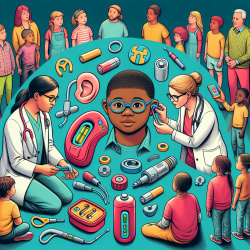Burnout is a common issue among mental health professionals working in schools, especially in today’s fast-paced and high-demand educational environments. The need to juggle multiple responsibilities, manage large caseloads, and meet the diverse needs of students can take a toll on even the most dedicated professionals. However, there is a beacon of hope on the horizon: virtual therapy.
Virtual therapy, or online therapy services, has revolutionized the way mental health support is delivered in schools. By leveraging technology, mental health professionals can provide effective, timely, and convenient support to students while also managing their own workload more efficiently. In this blog, we will explore how virtual therapy can help alleviate burnout and reignite your passion for your vital work.
Flexibility and Convenience
One of the most significant advantages of virtual therapy is the flexibility it offers. Traditional in-person therapy sessions require mental health professionals to be physically present, often leading to long hours and limited availability. Virtual therapy, on the other hand, allows for more flexible scheduling, enabling professionals to balance their work and personal lives more effectively.
- Sessions can be conducted from any location with an internet connection.
- Reduced travel time and expenses.
- Ability to accommodate students' schedules more easily.
Enhanced Access to Services
Virtual therapy can also improve access to mental health services for students, particularly those in special education or remote areas. By providing online therapy services, mental health professionals can reach a broader range of students who may not have access to in-person support. This can lead to more equitable and inclusive mental health care in schools.
- Students in rural or underserved areas can receive timely support.
- Special education students can benefit from tailored online interventions.
- Increased privacy and comfort for students who may feel anxious about in-person sessions.
Efficient Case Management
Managing large caseloads is a common challenge for school mental health professionals. Virtual therapy platforms often come with built-in tools that streamline case management, making it easier to track progress, document sessions, and communicate with other stakeholders.
- Automated scheduling and reminders.
- Secure, cloud-based storage for session notes and student records.
- Easy collaboration with teachers, parents, and other professionals.
Professional Development and Support
Burnout can be exacerbated by a lack of professional development and support. Virtual therapy platforms often provide access to a wealth of resources, including training modules, webinars, and peer support networks. This continuous learning and community engagement can help mental health professionals stay updated on best practices and feel more connected to their field.
- Access to ongoing training and professional development.
- Opportunities to connect with peers and share experiences.
- Supportive communities that understand the unique challenges of school-based mental health work.
Reigniting Your Passion
Ultimately, the goal of virtual therapy is to enhance the well-being of both students and mental health professionals. By reducing the logistical burdens and providing more flexible, efficient, and supportive ways to deliver services, virtual therapy can help reignite your passion for your work. You can focus more on what truly matters: making a positive impact on the lives of the students you serve.
At TinyEYE, we are committed to supporting mental health professionals in schools by providing high-quality online therapy services. Our platform is designed to meet the unique needs of school environments, ensuring that both students and professionals can thrive. Together, we can create a brighter, more supportive future for everyone involved.
If you’re feeling burnt out, consider exploring the possibilities of virtual therapy. It might just be the change you need to reignite your passion and continue making a difference in the lives of your students.










